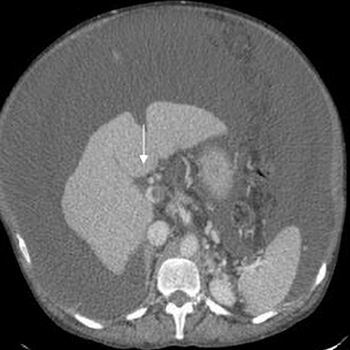Keywords
ecompensated cirrhosis, alcohol abstinence, portal vein thrombosis, refractory ascites, transjugular intrahepatic portosystemic shunt (TIPS)
Abstract
The elimination of the aetiological factors causing liver injury is an important cornerstone in preventing progression and increasing survival in patients with cirrhosis. The authors present the case of a 63-year-old woman with a history of long-term alcohol abuse and consequent liver cirrhosis. Over the years, the patient presented progressive deterioration with severe malnutrition and had multiple hospital admissions due to decompensated cirrhosis, including refractory ascites, variceal bleeding and an extensive portal vein thrombosis (PVT). Anticoagulant therapy was not initiated due to a high risk of variceal bleeding. She eventually became abstinent, but PVT precluded a liver transplant. Over the following 10 years, her performance status gradually improved, with no new decompensation episodes and liver function normalization, although refractory ascites persisted. Abdominal CT showed spontaneous recanalization of the portal vein and a transjugular intrahepatic portosystemic shunt (TIPS) procedure was performed with gradual improvement of ascites. In this atypical case, an unexpected favourable evolution of advanced stage cirrhosis was observed with long-term improvement in clinical status and liver function, resulting in an estimated 10-year cumulative mortality rate of 99.98% and highlighting the importance of abstinence. Unexpectedly, spontaneous complete repermeabilization of the PVT was also observed, despite its extent and the absence of anticoagulation therapy.
References

Views: 872
HTML downloads: 107
PDF downloads: 477
Published:
2020-12-03
Issue:
2020: Vol 7 No 12
(view)










